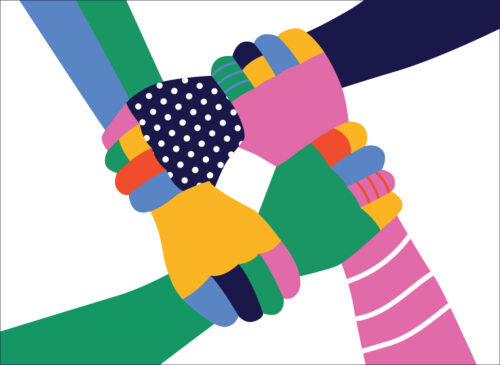
Just weeks after Prince Edward Island became the first province in Canada to pass a bill restricting the use of non-disclosure agreements (NDAs) on Nov. 17, some harms of NDAs have been in the news. NDAs are contracts in which parties agree not to disclose certain information.
On Dec. 3, CBC reported that according to multiple sources, NDAs were used to silence three individuals who had come forward with sexual harassment complaints at the University of P.E.I.
The board of governors at the University of P.E.I. announced Dec. 8 there would be an independent investigation of allegations of workplace misconduct by the university’s former president, whose conduct was at the centre of two sexual harassment complaints filed by employees in 2013. That year, the university reached settlement agreements about those complaints with the P.E.I. Human Rights Commission.
Some forms of NDAs are merely routine practice, such as when consultants promise not to disclose information about a company that they learn while undertaking a project, or when senior employees quit their jobs and promise not to disclose proprietary information to competitors. Other NDAs, however, are harmful to victims of misconduct.
When NDAs are harmful
Organizations — and high-profile figures like Harvey Weinstein and Donald Trump — have used NDAs to silence the survivors of illegal and unethical behaviours. NDAs have been used to prevent people from publicly discussing toxic workplace conditions.
We know from our research and from news reports that NDAs also have been used by other universities. NDAs seem especially contradictory in the context of universities given their commitment to seeking truth. As our research in universities, businesses and other workplaces has documented, NDAs can have negative effects on workers and their organizations.

Movements in Canada and the United States have called for the ban of NDAs. For example, California Senator Connie M. Levya called for such a ban to end the “curtain of secrecy” resulting from such agreements. The #MeToo movement highlighted problems of NDAs in a variety of settings including entertainment, broadcast, journalism and high-tech industries.
Julie Macfarlane, an emerita professor of law at the University of Windsor, co-founded a global campaign — Can’t Buy My Silence — to end
the misuse of NDAs. Former Fox News Anchor, Gretchen Carlson, who signed an NDA as part of her $20 million settlement for sexual harassment by the then-CEO Roger Ailes, launched a nonprofit, Lift Our Voices, with the mission of ending NDAs.
She tells as much of her story as she can in a documentary on NDAs. The New York Times reported in 2019 that 12 U.S. states have bills to restrict NDAs in instances of sexual harassment and assault, but only New Jersey has effectively made NDAs unenforceable when victims violate their terms. California has strengthened its NDA restrictions, which will take effect in 2022.
Limiting NDAs is just the first step
Limiting NDAs, as the P.E.I. bill does, is a good first step, but much more needs to be done.
NDAs are not the main enabler of persistent unethical behaviour in workplaces. They are merely a symptom of a much larger problem. Our research found that the root cause of widespread and persistent unethical behaviour in workplaces is networks of complicity: networks formed by perpetrators that increase perpetrators’ power, and disguise and hide wrongdoings. People who are part of these networks prey on anyone who resists the actions of the perpetrator or the wider group.
We interviewed 28 people in diverse organizations in which persistent sexual harassment had occurred. This included people at nine different universities located in both Canada and the U.S., and people from other types of organizations.

Networkers inside and outside organizations
Perpetrators are excellent networkers inside and outside their organizations. They lure people into their networks of complicity with rewards, favours and undeserved promotions, or with fear and intimidation. While their behaviour is unethical, perpetrators may also be charismatic and charming.
They control information and build myths about themselves, their successes and their importance to the organization.
Over time, the network of complicity becomes powerful and entrenched. It causes considerable harm to victims and organizations.
The network of complicity typically is supported and enabled by the passivity of bystanders. They often suffer from moral myopia, a distortion of moral vision in which ethical issues do not come clearly into focus, and moral muteness, in which they do not talk about ethical issues.
Network members create and perpetuate toxic work cultures as they turn a blind eye to persistent unethical behaviour or even participate in it. They instil a sense of helplessness and dismay among employees, causing turnover to increase, and often the most talented employees exit the organization. Employees who remain become disheartened and lose their motivation to perform.
Complicity in universities
The membership of networks of complicity typically consists of influential people from inside and outside the organization. In the case of universities, for example, network of complicity members might include senior university administrators, members of the human resources department, professors and staff, as well as outsiders such as government supporters and members of regional educational associations.
The network has the tools and the power that enable it to influence, control and victimize people in the organization. NDAs are only one tool among many used by networks of complicity to silence victims.
The networks also use intimidation, fear, rumours that denigrate objectors or witnesses of unethical behaviour, threats of demotion or job loss and various types of uncivil behaviour, to name a few. Even less severe unethical behaviour by network members, such as incivility, can be damaging to individuals and organizations.

Addressing unethical behaviour
NDAs that silence victims of persistent unethical behaviour need to be banned, but uncovering and halting persistent unethical behaviour in workplaces requires much more.
Perpetrators, of course, must be removed, but that is not enough because the network of complicity typically remains intact. Leaders must proactively work to identify and disband the network of complicity. For example, some members may need to be dismissed, but others could be reassigned to different units.
Survivors, who typically have been disenfranchised and isolated by the network of complicity, must be provided the resources they need and networked into the organization in meaningful ways. Importantly, the organizational culture must be transformed, which is typically a long-term endeavour, but it can be done.
Where leaders themselves are involved in these networks, there are only two options: an internal, informal leader with the skills to give voice to their values and inspire their co-workers to take collective action must emerge; or boards or external regulators must order investigations to be undertaken by unbiased third parties.
Our research suggests that investigators must go beyond looking at individual wrongdoers and identify the members of the network of complicity who supported them. These people also should be held to account.![]()
Peggy Cunningham, Professor of Business, Dalhousie University and Minette Drumwright, Associate Professor of Advertising and Public Relations, University of Texas at Austin
This article is republished from The Conversation under a Creative Commons license. Read the original article.










